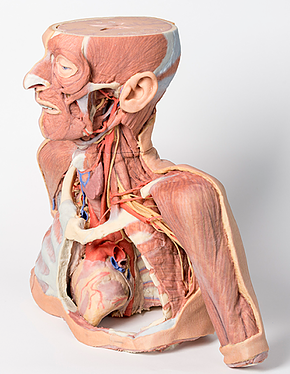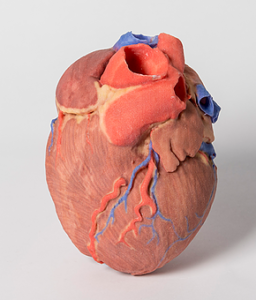 In my high school, every biology class was required to dissect a few animals, and I recall it being rather unpleasant. Interesting, for sure, and helpful – few lessons stuck with me the way that examining the actual organs of a worm, frog and crayfish did. I didn’t enjoy it, though, and that was fine – I never had any aspirations of going to medical school, so once that chapter of my high school biology class was finished, I was perfectly happy to move on and never slice open another animal again.
In my high school, every biology class was required to dissect a few animals, and I recall it being rather unpleasant. Interesting, for sure, and helpful – few lessons stuck with me the way that examining the actual organs of a worm, frog and crayfish did. I didn’t enjoy it, though, and that was fine – I never had any aspirations of going to medical school, so once that chapter of my high school biology class was finished, I was perfectly happy to move on and never slice open another animal again.
 For those pursuing medical careers, though, dissection is a recurring requirement, and it can be rough on some students, particularly when the time comes to dissect human cadavers. Some students are even prohibited from doing so for religious and/or cultural reasons. But in a story we’ve been following for two years, an Australian university found a viable alternative to human cadavers – 3D printed anatomy kits. Monash University and partner Erler Zimmer first made their 3D Printed Anatomy Series available for sale last year, with the full series finally completed at the end of the year.
For those pursuing medical careers, though, dissection is a recurring requirement, and it can be rough on some students, particularly when the time comes to dissect human cadavers. Some students are even prohibited from doing so for religious and/or cultural reasons. But in a story we’ve been following for two years, an Australian university found a viable alternative to human cadavers – 3D printed anatomy kits. Monash University and partner Erler Zimmer first made their 3D Printed Anatomy Series available for sale last year, with the full series finally completed at the end of the year.
We’ve become very familiar with 3D printed organ models as an increasingly common tool for surgeons to practice procedures and for medical students to learn the anatomy of individual body parts. 3D printing a detailed, fully accurate replica of the entire human body, though, was a different challenge altogether, and one that took a lot of time to perfect. Professor Paul McMenamin, Director of the Centre for Human Anatomy Education at Monash, and his team used CT and laser scans of real human bodies to create the full-color replicas, which have garnered a great deal of interest from medical schools and institutions.
While the development process took two and a half years, things are moving much more quickly now that the 3D files are completed and readily available. 3D printing new models, however, still takes time. Each full-body replica consists of 57 parts, and larger components can take up to a week to 3D print. With the time and material required, the models are on the expensive side – each kit is valued at more than AUD $250,000.“We printed out the first replicas two-and-a-half years ago and finished the entire series only nine months ago,” Professor McMenamin said. “Since then, we are getting interest from all over the world as it is now a commercially available anatomical teaching tool. We are the leaders in this field.”
 The cost is worth it, though, for medical universities and hospitals alike. Monash Rural Health Churchill, a branch of the main university, was recently presented with a full kit so that students can study locally, rather than traveling to the main campus in Clayton. The Churchill campus serves about 90 students in the first-year anatomy program, but they’re required to travel every couple of weeks to the main campus to access the anatomy facilities – a drive of about an hour and a half.
The cost is worth it, though, for medical universities and hospitals alike. Monash Rural Health Churchill, a branch of the main university, was recently presented with a full kit so that students can study locally, rather than traveling to the main campus in Clayton. The Churchill campus serves about 90 students in the first-year anatomy program, but they’re required to travel every couple of weeks to the main campus to access the anatomy facilities – a drive of about an hour and a half.
With a 3D printed anatomy kit, Churchill students can now learn much more without having to travel a long distance – an advantage that many other universities are likely to avail themselves of. Do you see these kits as a substantial benefit? Discuss further in the 3D Printed Anatomy Kits over at 3DPB.com.
[Source: Latrobe Valley Express]
Subscribe to Our Email Newsletter
Stay up-to-date on all the latest news from the 3D printing industry and receive information and offers from third party vendors.
Print Services
Upload your 3D Models and get them printed quickly and efficiently.
You May Also Like
Reinventing Reindustrialization: Why NAVWAR Project Manager Spencer Koroly Invented a Made-in-America 3D Printer
It has become virtually impossible to regularly follow additive manufacturing (AM) industry news and not stumble across the term “defense industrial base” (DIB), a concept encompassing all the many diverse...
Inside The Barnes Global Advisors’ Vision for a Stronger AM Ecosystem
As additive manufacturing (AM) continues to revolutionize the industrial landscape, Pittsburgh-based consultancy The Barnes Global Advisors (TBGA) is helping shape what that future looks like. As the largest independent AM...
Ruggedized: How USMC Innovation Officer Matt Pine Navigates 3D Printing in the Military
Disclaimer: Matt Pine’s views are not the views of the Department of Defense nor the U.S. Marine Corps Throughout this decade thus far, the military’s adoption of additive manufacturing (AM)...
U.S. Congress Calls Out 3D Printing in Proposal for Commercial Reserve Manufacturing Network
Last week, the U.S. House of Representatives’ Appropriations Committee moved the FY 2026 defense bill forward to the House floor. Included in the legislation is a $131 million proposal for...


































